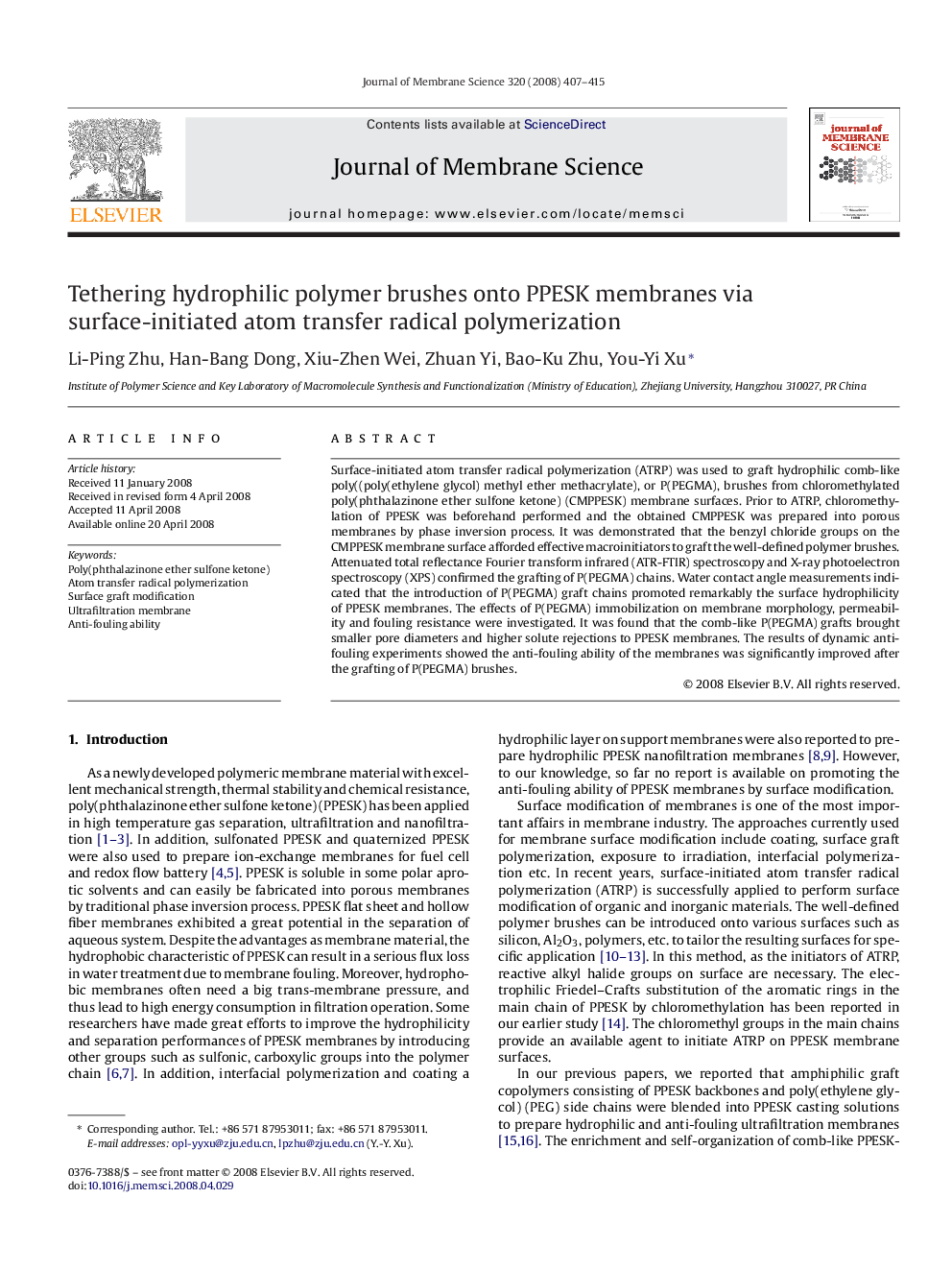| Article ID | Journal | Published Year | Pages | File Type |
|---|---|---|---|---|
| 637517 | Journal of Membrane Science | 2008 | 9 Pages |
Abstract
Surface-initiated atom transfer radical polymerization (ATRP) was used to graft hydrophilic comb-like poly((poly(ethylene glycol) methyl ether methacrylate), or P(PEGMA), brushes from chloromethylated poly(phthalazinone ether sulfone ketone) (CMPPESK) membrane surfaces. Prior to ATRP, chloromethylation of PPESK was beforehand performed and the obtained CMPPESK was prepared into porous membranes by phase inversion process. It was demonstrated that the benzyl chloride groups on the CMPPESK membrane surface afforded effective macroinitiators to graft the well-defined polymer brushes. Attenuated total reflectance Fourier transform infrared (ATR-FTIR) spectroscopy and X-ray photoelectron spectroscopy (XPS) confirmed the grafting of P(PEGMA) chains. Water contact angle measurements indicated that the introduction of P(PEGMA) graft chains promoted remarkably the surface hydrophilicity of PPESK membranes. The effects of P(PEGMA) immobilization on membrane morphology, permeability and fouling resistance were investigated. It was found that the comb-like P(PEGMA) grafts brought smaller pore diameters and higher solute rejections to PPESK membranes. The results of dynamic anti-fouling experiments showed the anti-fouling ability of the membranes was significantly improved after the grafting of P(PEGMA) brushes.
Keywords
Related Topics
Physical Sciences and Engineering
Chemical Engineering
Filtration and Separation
Authors
Li-Ping Zhu, Han-Bang Dong, Xiu-Zhen Wei, Zhuan Yi, Bao-Ku Zhu, You-Yi Xu,
